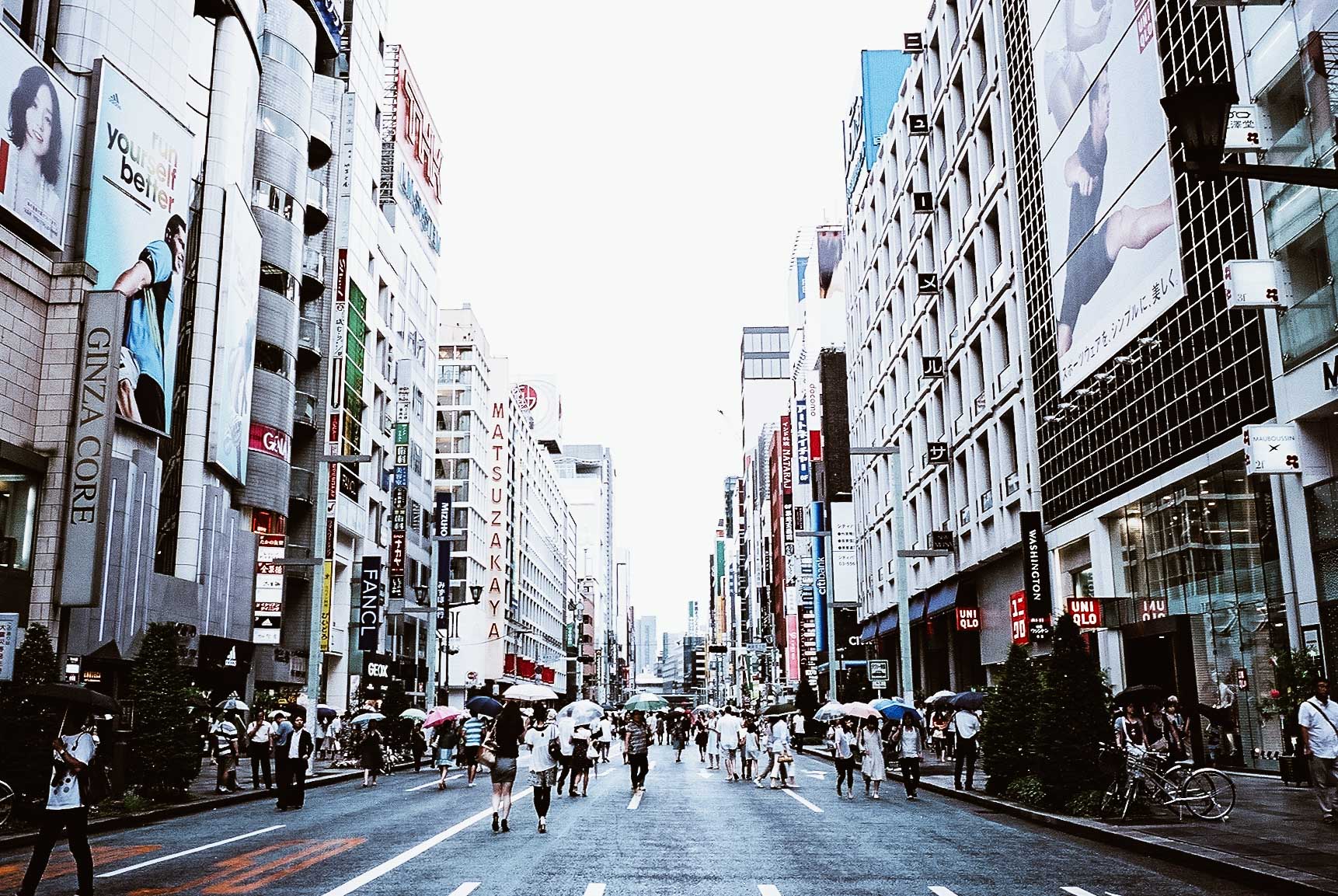Japan Travel: Ginza
Ginza: expensive, elegant and luxurious
Located in Chuō, Ginza (銀座) is Tokyo’s most famous shopping area. This luxurious district was once part of the ancient Kyobashi district, which, together with Nihonbashi and Kanda, formed the core of Shitamachi, the original center of Edo-Tokyo. Built on an ancient reclaimed swamp during the 16th century, Ginza owes its name (Silver Mint) to the establishment of a silver coin mint (Silver Coin Mint) on this land in 1612.

photo credit: wikimedia.org
A devastating fire destroyed much of the area in 1872. Following this incident, the government decided that reconstruction was to use fireproof bricks to erect new buildings, and the roads should be improved and enlarged. At the same time, they should be able to connect Shimbashi station to Tsukiji. This new version of Ginza was designated as a “model of modernization” and the Irish architect Thomas Waters was given the responsibility of designing the area. In the following year, a long western-style shopping street rose with two- and three-storey Georgian brick buildings reaching from the Shinbashi bridge to the Kyōbashi bridge.


However, the high cost for both the purchase and the lease of these new buildings prevented their long-term occupations and at the same time, an issue regarding the climate arose; such buildings were not suitable for the weather conditions unique to Tokyo. To add to the issues, the design of this area contrasted with the traditional Japanese style, and as such it was not quite appreciated by visitors who were much more interested in an Edo-style town and rather than something “similar to Broadway”, as described in the words of the English tour guide writer, Philip Terry.

Despite stylistic problems, Ginza managed to flourish as a symbol of “civilization and enlightenment”, becoming famous for its rich shop windows. In the period between the two world wars, the habit of spending time and walking through Ginza, even with no purpose, grew very popular. As time passed, most of the European-style buildings have disappeared. Among those remaining is the Wakō building, originally built by Kintarō Hattori, with its iconic Hattori Clock Tower and its luxurious gold objects inside.

photo credits: japantimes.co.jp
Not only shopping
A key stop for shoppers in Ginza is definitely Ginza Six. Opened in the spring of 2017, it is the largest shopping complex in the district. In addition to numerous cosmetic and fashion floors, there are floors dedicated to food and interior design, a large Tsutaya bookstore specializing in art publications, a pleasant rooftop garden and a Noh theater in the basement.
No less famous is the store of the chain Mitsukoshi. While this store opened in 1930, its history dates back to 1673, when it was first established. It offers products and services on twelve floors. Fans of the brand Uniqlo will find satisfaction in this 12-storey building which offers the widest range of products in the world of this brand.

Ginza, however, is not just limited shopping. For Kabuki representations, the best place is found in this part of town. It is the Kabukiza Theater. Do not miss a trip to the Yurakucho Gado-shita Dining as well. It is one of Tokyo’s most interesting dining options, located under the sky train tracks, north and south of the Yurakucho station (In Japanese: Gado-shita, “under beam”). Dozens of restaurants are integrated into the brick arches below the Yamanote line which extend for over 700m. Here you can taste world-famous Japanese cuisine, or sip special wines in the luxurious French wine shops.

photo credits: harv.world
Share this:
- Click to share on Facebook (Opens in new window)
- Click to share on Twitter (Opens in new window)
- Click to share on Tumblr (Opens in new window)
- Click to share on Pinterest (Opens in new window)
- Click to share on Telegram (Opens in new window)
- Click to share on WhatsApp (Opens in new window)
- Click to share on Reddit (Opens in new window)
- Click to print (Opens in new window)






